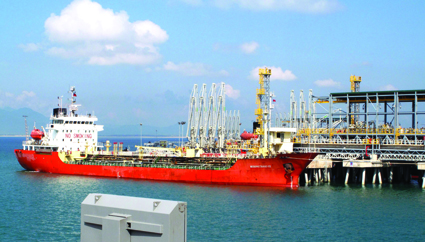Le Trong Dung[1] and Bui Duc Giang[2]
Law on Enterprises No. 68/2014/QH13 dated November 26, 2014, comes into force from July 1, 2015 (the “2014 Law on Enterprises”). This law introduces significant changes compared to Law No. 60/2005/QH11 on Enterprises dated November 29, 2005, as amended in 2009 and 2013 (the “2005 Law on Enterprises”). Some of those changes will directly affect lending by credit institutions[3].
Searching for information on the borrowing company
Under the Regulation on Lending by Credit Institutions to Customers issued together with Decision No. 1627/2001/QD-NHNN dated December 31, 2001, of the State Bank of Vietnam, as amended in 2002, 2005, 2011 and 2014, before lending, banks must ensure inter alia that:
- the purpose of utilization of the loan is lawful (Article 7.2);
- the investment project or the business plan to be financed by the loan is feasible and efficient and complies with the law (Article 7.4); and
- the loan may not be used to pay any transactions prohibited by law (Article 9.1).
In practice, it is generally admitted that those rules imply that the investment project or the business plan to be financed by the loan should be in line with the business activities of the borrower as indicated in its enterprise registration certificate. Therefore, banks are obliged to search for information on the borrowing entities’ business lines before deciding whether to lend or not.
For information, under Article 34.2 of the third draft of a circular on lending by credit institutions and foreign bank branches to customers recently released by the State Bank of Vietnam for public comment, one of the conditions for a customer to take out a bank loan is that the purpose of utilization of the loan is lawful and the plan of utilization of the loan is feasible.
Under the 2005 Law on Enterprises, in order to know what business lines the borrowers were allowed to carry out, banks had to look only at their enterprise registration certificates. From now on, to obtain this information, banks will have to:
- check the charter (articles of association) provided to them by the borrowers (because business lines are no longer a compulsory item in the enterprise registration certificate[4]); or
- request for information on the business lines registered by the borrowers (since business lines shall be made available for public inspection) via the National Enterprise Registration Information Portal or directly at the business registration office (Articles 33 and 34).
Obviously, the second alternative is more reliable. However, banks will have to spend more time and money, especially in the current context that due to technical issues regarding payment of information supply fees by bank transfer, searching for information on the National Enterprise Registration Information Portal is far from being an efficient channel.
Who will have the authority to sign contracts?
In practice, courts often declare loan and security agreements null and void on the ground that those who executed them had not been given authority to act on behalf of the borrowers/securing parties.
Under Article 13.2 of the 2014 Law on Enterprises, a limited liability company or shareholding company may have more than one legal representative, provided that its charter specifies the number, managerial positions and rights and obligations of each of them[5]. Therefore, banks should ensure whether a specified legal representative would have the power to bind the borrower by his signature through careful reading of the borrower’s charter[6].
What will be the legal consequences if one of the legal representatives enters into or performs a transaction beyond the scope of his representation? This is a shame that no answer is provided in the 2014 Law on Enterprises.
Hopefully, a protection of third parties dealing with a company in good faith will be provided in a text implementing the 2014 Law on Enterprises or the amended Civil Code.
 |
| Customer transactions at Vietcombank’s Ho Chi Minh City branch __Photo: Hoang Hai/VNA |
Approval of loan and security agreements
Under Articles 56.2 (d)[7] and 149.2 (h)[8] of the 2014 Law on Enterprises, certain high value loan agreements must be approved by the Members’ Council or Board of Management of the borrowing company. More generally, Articles 56.2(n), 135.2(k) and 149.2(q) leave open the possibility for the company’s charter to confer upon the Members’ Council or Board of Management authority to approve any loans and/or security agreements.
Articles 61.3 and 154.1 of the 2014 Law on Enterprises provide that the person writing the minutes and the chairman of the meeting organized to approve the agreement - who sign the minutes - shall be jointly responsible for the accuracy and truthfulness of the minutes of the meeting. The thing is that if the minutes of meeting contain false or fraudulent information, will the loan/security agreement be affected (e.g. be null and void)? Will the bank be able to sue not only the person writing the minutes and the chairman of the meeting but also other members/shareholders of the borrowing company?
It should be noted that if the loan agreement is null and void, the borrower will have to pay the bank only the principal but not the interest.
To prevent subsequent conflicts, banks may request that the minutes of meeting of the Members’ Council or Board of Management be signed by all members attending to the meeting or their representatives.
Does the finance agreement need to be sealed?
Pursuant to Article 36 of the 2005 Law on Enterprises, the seal of an enterprise had to be retained and preserved at the head office of such enterprise and the legal representative of the enterprise had to be responsible for the management and use of the seal.
Those rules were further detailed by Decree No. 58/2001/ND-CP on management and use of seals dated August 24, 2001, as amended in 2009 and implementing texts of the Ministry of Public Security (Circular No. 07/2010/TT-BCA dated February 5, 2010, and Circular No. 21/2012/TT-BCA dated April 13, 2012) under which:
- a seal confirmed the legal value of documents on which it was appended;
- the provincial-level public security department was in charge of issuing seals and sample seal registration certificates to enterprises; and
- a seal was valid for 5 years from the date of its use as mentioned in the sample seal registration certificate.
Article 44 of the 2014 Law on Enterprises confers on the company the right to decide itself the form, number and contents of its seal(s) as well as the use and management of the seal(s)[9]. Basically, this means that the borrower’s charter may stipulate (i) whether the loan agreement or the security agreement must be under seal or not and (ii) if so, the legal value of appending the seal on such agreements. The company must simply notify the business registration office of the sample seal for the purpose of publicly publishing it on the National Enterprise Registration Information Portal.
As such, previously banks were used to request borrowers to provide them with sample seal registration certificates justifying that the seals remained valid. From now on, in order to verify whether the seal is that of the borrowers and if it will bind the borrower or not, they will have to review the borrowers’ charters and to make inquiries on the National Enterprise Registration Information Portal or at the business registration office.
Loans secured by assets of a third party
The 2014 Law on Enterprises provides that a company’s officers (legal representatives, directors, chairman of the Members’ Council or the Board of Management...) may not use the company’s assets for the benefit of other entities or individuals (Articles 14.1, 71.1 (b) and 160.1(c)). This rule is not a new one but Articles 72 and 161 of this Law have officially legalized initiation of a civil liability lawsuit against the company’s officers. As a result, the company’s officers will be reluctant or refuse to execute the security agreement unless the members or shareholders of the company - who have the authority to sue - pass a resolution to approve the security agreement. This risk makes more fragile third-party security, which is of common use in many other jurisdictions but remains a sensitive topic in Vietnam.
Review of the borrower’s charter
As mentioned above, obtaining an updated version of the borrower’s charter is important for banks. However, many provisions of the charter that banks need to know are not required to be available for public inspection.
Article 171.2(a) of the 2014 Law on Enterprises provides that shareholding companies’ charters must be published on their websites (if any). Likewise, State-owned enterprises must publish their charters on their websites and on that of the agency representing the owner of those State-owned enterprises (Article 108.1(a)).
Nevertheless, as (i) not all companies have their own websites; (ii) those texts do not expressly require companies to publish their most updated charters; and (iii) a company may invoke technical problems with a view to avoid its obligation, the search for information via the borrower’s website may not prove to be efficient.
In this regard, it should be noted that the 2014 Law on Enterprises does not expressly prevent the business registration office, which manages the enterprise registration file of the borrower, from providing a copy of the borrower’s charter to the lender. Nonetheless, as there may be sensitive information on the charter, such as profit distribution or loss sharing schemes, which should be kept confidential, the business registration office may refuse to do so. In other terms, lenders may only reply on the good faith of their borrowers.
In light of the above, the 2014 Law on Enterprises will create more troubles for lending banks. This is not good news now when banks are competing hard for customers.-
Legal Department, JSC Bank for Foreign Trade of Vietnam (Vietcombank).
1. Name of the enterprise and enterprise identification number.
2. Head office address of the enterprise.
3. Full name, permanent residential address, nationality and number of citizen’s identity card, people’s identity card, passport or other lawful personal identification of the legal representative of the enterprise in case of a limited liability company or shareholding company; and of unlimited liability partners in case of a partnership, and of the owner of the enterprise in case of a private enterprise; full names, permanent residential addresses, nationalities, number of citizen’s identity cards, people’s identity cards, passports or other lawful personal identification of members being individuals; names, enterprise identification numbers and head office addresses of members being organizations in case of a limited liability company.
4. Charter capital”.
…
d/ To make decisions on solutions for market development, marketing and technology transfer; to approve loan agreements and contracts for sale of assets valued at fifty (50) or more per cent of the total value of assets recorded in the most recently published financial statements of the company, or a smaller percentage or value as stipulated in the charter of the company”.
…
h/ To approve contracts for purchase, sale, borrowing, lending and other contracts valued at thirty five (35) or more per cent of the total value of assets recorded in the most recent financial statements of the company, if the charter of the company does not stipulate any other percentage or value”.
1. An enterprise has the right to decide on the form, number and contents of its seal. The contents of a seal must contain the following information:
(a) Name of the enterprise;
(b) Enterprise identification number.
2. Before use, the enterprise is obliged to notify the business registration office of the sample seal for the purpose of publicly publishing it on the National Enterprise Registration Information Portal.
3. The seal shall be managed, used and retained in accordance with the provisions of the charter of the company.
4. The seal shall be used in the cases stipulated by law or as agreed by the trading parties.
5. The Government shall provide detailed regulations on this Article”.









